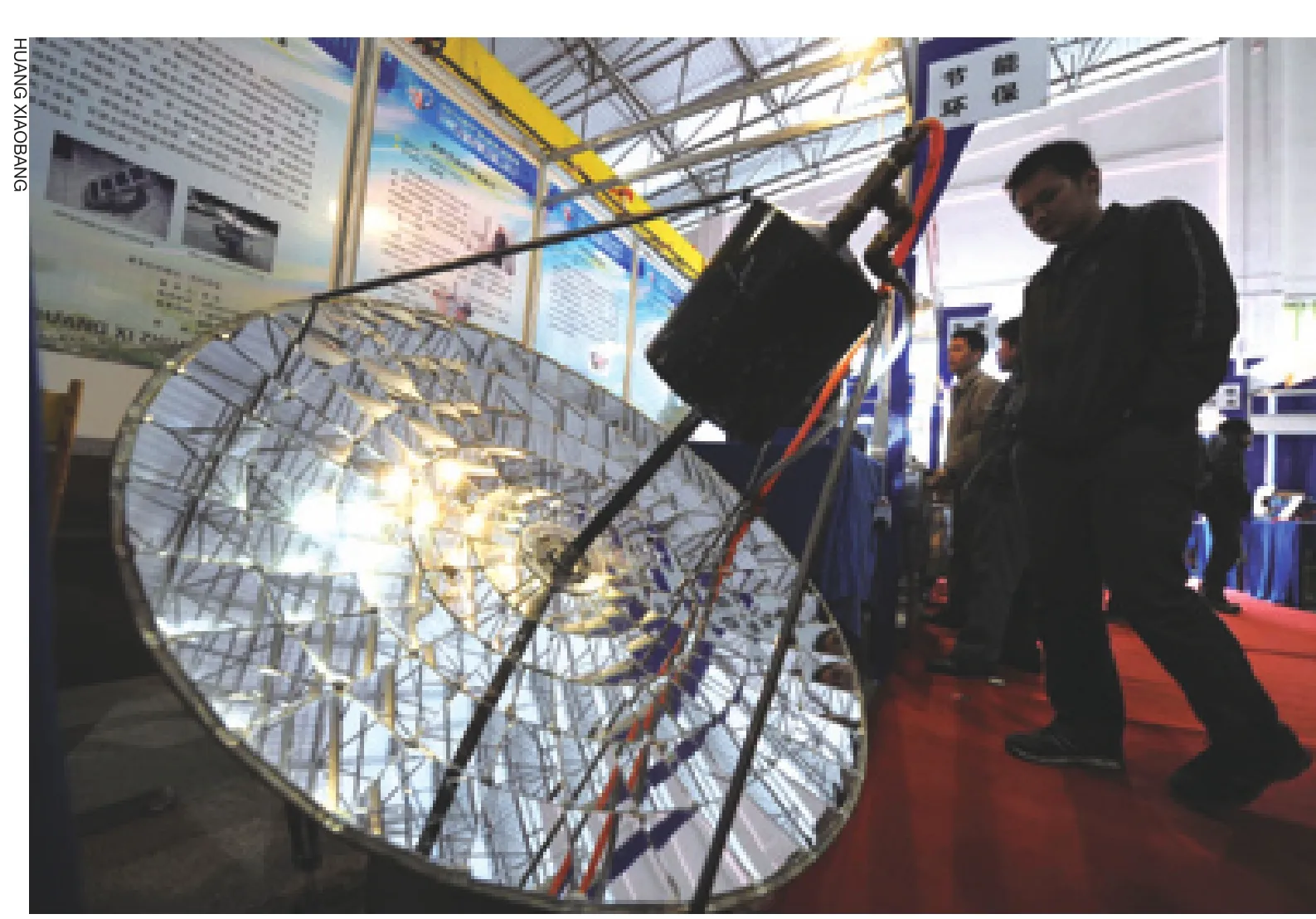Putting the Brakes on Carbon
2010-12-06TANGYUANKAI
More Chinese are adhering to a low-carbon lifestyle
By TANG YUANKAI
Han Xiangyu hesitates every day on whether he should climb the stairs or take the elevator to his 12th-floor apartment. He also ruminates on what temperature to set the thermostat and whether he should take a car or bus to go shopping.
Han is a hi-tech company manager in Beijing, but he prefers to identify himself as a member of the low-carbon tribe.
“People emit a great amount of carbon dioxide, which generates global warming and climate change,” said Han. “People working in the hi-tech industry are responsible to find ways to deal with the negative impacts that climate change exerts on ecological systems,agriculture, energy, economy and people’s lives.”
Not long ago, many residential communities including Han’s gave each household five energy-saving bulbs at the very low price of 1 yuan ($0.15) per bulb. The Chinese Government, meanwhile, set carbon emission reduction goals. The government has said that the carbon dioxide emission per unit of GDP will decrease by 40-50 percent in 2020 compared to the 2005 level.
Hi-tech aids
Beijing college student Qu Er recently bought a new cellphone that uses less than 1 kwh of electricity per year. The phone harnesses new energy-saving technology and is produced by Changhong Electric Co. Ltd.,one of China’s major household appliance producer.
“Saving 1 kwh of electricity can reduce carbon dioxide by 1 kg,” said Qu.
If the technology is widely adopted in the cellphone industry, statistics from Changhong show that 522 million kwh of electricity can be saved in China every year, which is equal to the energy released by the burning of more than 200,000 tons of coal. Those energy savings would keep 410 million cubic meters of carbon dioxide and sulfur dioxide emissions out of the atmosphere.
Qu also learned that a new type of battery developed by the company would soon be released. The battery, which has no mercury or cadmium, can make digital cameras last longer. “Even the package of the battery is very environmentally friendly and can be recycled. Batteries of this kind don’t have to be separated from other garbage,” said Qu.
“Science and technology are playing an irreplaceable role in developing a low-carbon economy and dealing with climate change,”said Wan Gang, Minister of Science and Technology. “China has already allocated more than 10 billion yuan ($1.5 billion) in developing technologies in this field and will provide more in 2010.”
Among the 4 trillion yuan ($586 billion)the Chinese Government allocated for dealing with the financial crisis, 210 billion yuan($31 billion) has gone to energy saving and ecological construction projects, according to statistics from the National Development and Reform Commission.
Over the last three years, the Chinese Government has made great efforts to deal with climate change. In 2007, the National Leading Committee on Climate Change was set up with Premier Wen Jiabao as its leader. It made China the first developing country to make a national plan to combat climate change. In August 2009,the Standing Committee of the National People’s Congress issued a resolution to develop a green and low-carbon economy.In November 2009, Premier Wen gave a speech titled “Let Science and Technology Lead China’s Sustainable Development,”which stressed innovations in low-carbon technologies.
“In some aspects, China is in line with developed countries in the energy-saving technology industry,” said Liu Yanhua, Vice Minister of Science and Technology. Liu noted that not all advanced technologies are suitable to China and the country must find low-cost alternatives that suit it.
Liu also pointed out that China is in a transitional urbanization period and many people are migrating from the countryside to cities. “The low-carbon economic development mode is difficult to be quickly realized in China. We need to both maintain rapid economic development and achieve emission reduction goals by 2020. It is a hard task,” said Liu.
In recent years, the Chinese Government has made efforts to protect natural forests and has also implemented artificial forest projects, in order to reduce carbon dioxide emissions, according to Liu.
Low-carbon life
“A low-carbon life starts from every detail of life, including switching off the lights,cooking, showering and traveling,” said Beijing’s Lin Jifang, who uses a self-timer to control time spent using the water dispenser,computer and television. “After joining the low-carbon tribe, I have become more sensitive than before.”
Lin is delighted to see that the term“low-carbon” has been included in many government reports and has become fashionable in China now. Beijing’s Chaoyang District Government has announced that it would construct the first low-carbon business area in the world.
Bank employee Li Yue said her lowcarbon lifestyle started after she happened upon an Internet carbon emission calculator and was surprised to find that she produced 4 tons of carbon dioxide emissions each year,a rate that was much higher than the average of 2.7 tons. She realized that some of her habits were not energy-ef ficient.
“If I put uncooked rice into water for 10 minutes before I put it into the rice cooker, it can save 4.5 kwh of electricity every year,”Li said.
Beijing college student Ai Jingjing has shown many people her carbon emission bill.Driving a car over 25.6 km generates 4.72 kg of carbon dioxide; running a computer for 10 hours emits 0.18 kg of carbon dioxide; and running a washing machine for 40 minutes generates 0.117 kg of carbon dioxide. Ai said 130,000 college students from 16 cities around China made a promise in 2009 to live a low-carbon life.
“We can make our life low-carbon by paying attention to many details,” said Yan Jingyan, a Shanghai journalist. Washing clothes by hand instead of using machines can avoid 0.3 kg of carbon dioxide emissions. Keeping the right air pressure in car tires can increase vehicle energy efficiency by 6 percent and keep 90 kg of carbon dioxide from being emitted each year. Placing cling film over food in microwave ovens can both keep the taste of the food and conserve electricity. Jogging in parks instead of on treadmills for 45 minutes can save 1 kg of carbon dioxide emissions.
“Building a low-carbon society relies on people changing their lifestyles,” said Zhou Dadi, a member of the Experts Committee for Climate Change.
Minister Wan revealed that China has compiled the National Energy Conservation and Emission Reduction Manual that introduces methods on how to save energy and reduce carbon dioxide emissions through changing how people live. ■

GREEN DESIGN: A solar heater controlled by a timer is exhibited at the Guangxi New Technology New Products Fair on January 12
